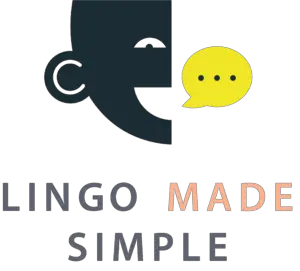Each person expresses thoughts in unique ways. One option that the English language offers is called a contraction.
A contraction means “to shorten.” You’re combining two or more words into one more straightforward expression.
Approximately 90 regular contractions are currently part of the English language and about 50 double contractions and virtually unlimited informal ones.
“Not” is one of the most common words contracted in English today. When you say, “I don’t know,” or, “I do not know,” you’re expressing the same thought with one minor difference.
Difference Between “I Don’t Know” and “I Do Not Know”
The only difference between “I Don’t Know” and “I Do Not Know” involves the contraction used to shorten “do not.” When a contraction gets included in an expression or statement, it doesn’t alter what gets communicated to others. It merely streamlines the writing or speech to make it more succinct.
When you look at the difference between “I don’t know” and “I do not know,” the contraction stands out because it turns the thought from four words into three.
It also changes the formality of the idea. If someone were always to speak using full words instead of contractions, they might be perceived as elitist, an intellectual, or somewhat pretentious.
When using the contraction, you have an informal structure that feels friendly, inviting, and casual.
What is different about English than in other languages is that no contractions are mandatory. You can say “I don’t know” or “I do not know” without having it interfere with the thought meaning.
The only problem with some contractions is that they lead to homophony. One of the biggest problems is the difference between “it is” and “it has” because both contractions get represented by “It’s.” That issue is further intensified because “its” signifies possession without an apostrophe.
Thankfully, those concerns disappear when working with “do not” and “don’t.”
History of Using Contractions in the English Language
Contractions are a common feature found in the English language. They’re used in speech more often than writing, although the differences are relatively small except for formal papers and essays.
When a contraction gets used to communicate a specific concept, they typically involve a vowel’s elision. That means an apostrophe gets inserted in its place when expressing the term in written English.
Some words have additional changes to them based on where the language stressor gets placed. Most contractions use auxiliary verbs and their negations, although not all of them are included in that process.
The first contractions were used during the early 17th century for English speakers. As it became more common for those concepts to be used in conversations, writers started incorporating them into their works. “Not” was one of the first used, which means “don’t” could be one of the oldest forms of this language construct we use today.
When writers first used contractions, it was only in drama or fiction. By the 19th century, they’d infiltrated descriptive texts, journalistic endeavors, and personal letters.
The only place where we don’t see contractions often today is within formal writing.
Informal contractions are still limited to speech. Here’s an example of a formally written sentence that can receive contractions.
“If Mary would go down to the store, then I do not need to run that errand.”
If we use an informal contraction structure to modify the sentence, it will end up looking like this when written.
“If Mary’d go down to the store, then I don’t need to run that errand.”
How many people can hear their parents or grandparents speaking a sentence in their head? That’s because speech in the early- to mid-20th century often uses informal contractions to speed up the delivery of thought concepts.
If you wanted a more formal way to express that thought, you’d eliminate the contraction with the name.
“If Mary would go down to the store, then I don’t need to run that errand.”
That’s why there is no difference between “I don’t know” and “I do not know.” They express the same concept in two unique ways.
What About People Who Have English as a Second Language?
When English is a second language, contractions are much harder to follow.
If your audience is an ESL class or someone who didn’t learn it as their native tongue, it might be better to avoid contractions to prevent miscommunication.
A contraction also adds unnecessary complexity to speech or writing when someone is trying to learn how to communicate. The same could be said of acronyms and abbreviations, even within informal writing.
That brings us to the Golden Rule: write for your reader or speak for your listener.
A Final Thought About “Don’t Know” vs. “Do Not Know”
When using subject-auxiliary inversion, some negative contractions remain together with the unit and invert with the subject to become auxiliary verbs. “Do you not know” modifies to “Don’t you know” in this construct to ensure the second-person pronoun placement is correct.
Some people see contractions like “don’t” as sloppy writing. Some people get taught that using this part of language is never acceptable, and strong opinions on both sides of the debate form.
When you look at your writing, it’s almost impossible to avoid a contraction today. These language elements are what we think and feel while processing thoughts and emotions.
Even in a two-sentence paragraph, there’s still a contraction used above – and one in this statement.
Contractions contribute to a style that flows, feels comfortable, and is easy to process. You want people to think that you’re talking to them in ways that feel approachable.
If you refuse to use a contraction at all, the entire information structure will feel formal and stilted. That outcome could cause some people to tune out!
Although there isn’t a significant difference between “I don’t know” and “I do not know,” we must not forget about formality. You can use “do not” for emphasis, but most people relate to the contraction more.

